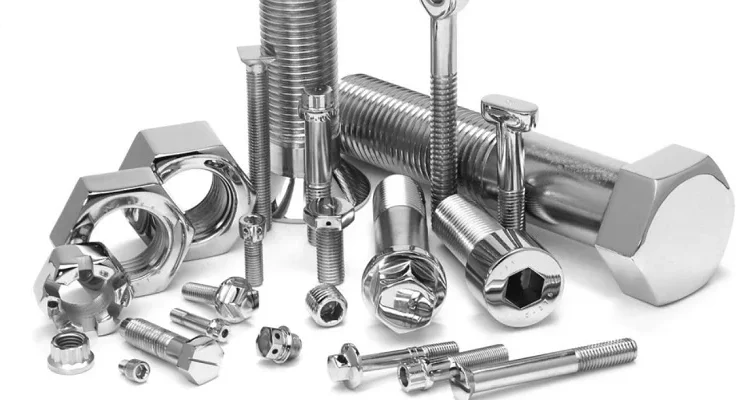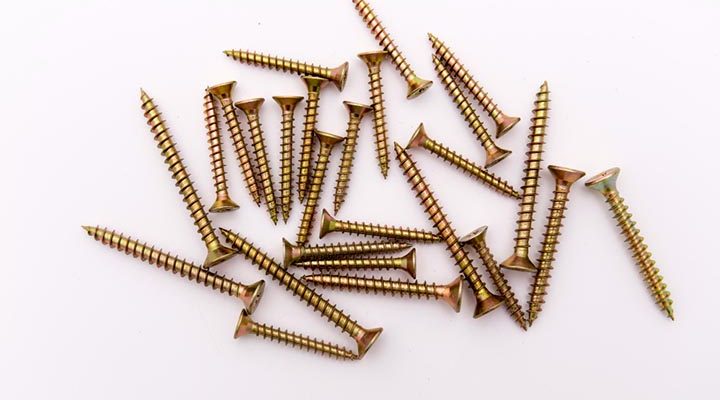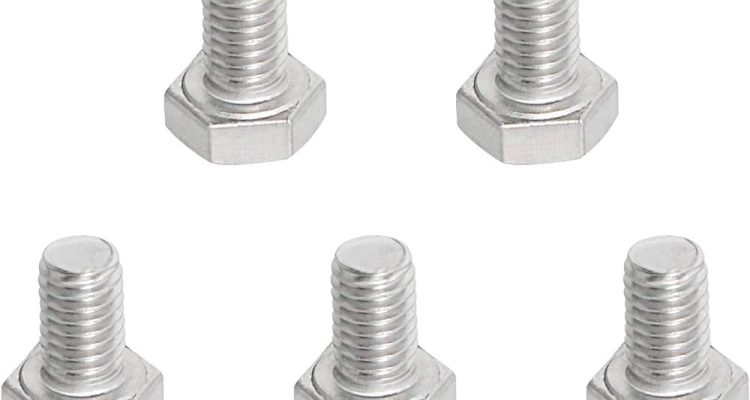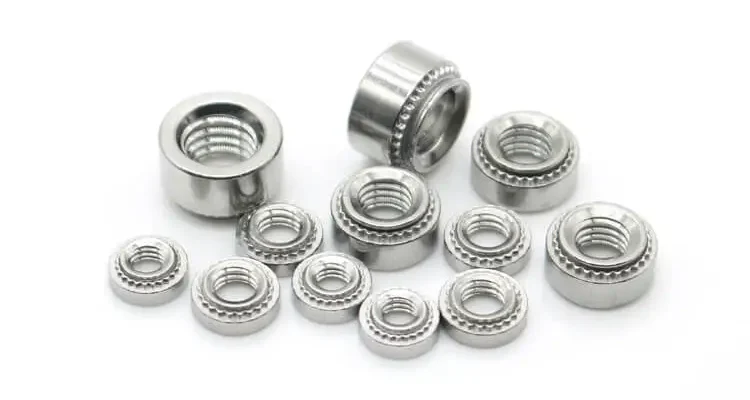
7 Types Of Lock Nuts And Their Applications
Nylon, metal, serrated flange, castle, K-lock, wing, and distorted thread lock nuts are used in automotive, machinery, and construction for secure, vibration-resistant fastening
Nylon Insert Lock Nuts
The benefit of a nylon insert lock nut (often called a Nylock nut) is the locking mechanism that is enabled by a nylon collar insert. This design makes the nut resistant to vibration and torque loosening, making them perfect for applications that require strength and durability.
Applications
Nylon insert lock nuts are used in a wide range of applications in the automotive, machinery industries Automotive manufacturers, such as Toyota and Ford, use these nuts to hold components used in components where there are vibrations, such as on an engine mounts, suspension systems and braking assemblies. These nuts are used in machinery on moving parts and assemblies that are subjected to continuous vibrations.
Details:
- Vibration Resistance: The nylon insert flexes elastically over the threads of the bolt to provide friction which resists twising back out due to the vibration. These can withstand up to 40Hz of vibrations, keeping connections firm even in vibrating environments like an automobile engine or industrial machinery.
- Torque – Nylon insert lock nuts typically require an installation torque of 10 to 30 Nm (Newton meters) depending on the bolt size and application. This coverage maintains the load securely, but prevents over-tightening the nut that could crush or strip the nylon insert or the bolt threads.
- Temperature Restrictions: For any temperatures greater than 250°F, the Nylon insert may lose its strength and will no longer have the same positive locking strength as it is designed to provide. So, they are not ideal for a high-temperature application like exhaust systems.
- Aerospace industry: For example, Boeing utilizes nylon insert lock nuts to bolt down components in aerospace interiors. These nuts help to keep everything bolted down despite the vibrations of the airframe and the occasional turbulence of flight Real-world studies have shown that using nylon insert lock nuts in these applications can reduce maintenance needs by as much as 15 percent, thanks to the design of the lock mechanism, which will not loosen over time.

Metal Lock Nuts
The all metal construction of metal lock nuts are ideal for use in environments where high temperatures could damage polyamide or plastic locking mechanisms. Using a twisted thread pattern, the nut locks itself into place, meaning that even under high degrees of stress or high vibration, if an R-pin we to become undone the nut has its own locking resistance to not move around.
Applications
Metal lock nuts are used in higher temperature and heavy-duty environments familiarly. One such example is among industrial machinery, Caterpillar uses the nuts in their heavy-duty excavators specifically related to areas like exhaust systems where temperatures can reach in excess of 300°F, and a metal constructed nut ensures these nuts do not have any melt-down or degradation, assuring locking under all extreme operating conditions.
Details
- Temperature Resistance – Since metal is capable of being used in almost all kinds of extreme temperatures then they are very resistant and durable during high temperatures which makes them a material that is very useful. Ratings up to 300°F offer lasting fastening in a variety of environments, including exhaust systems and industrial ovens.
- Installation Torque: Metal lock nuts require about 20 to 50 Nm of installation torque according to the nature of the use and the bolt size. Their High torque resistance that enables them to be used in heavy machinery and construction equipment, which need strong and reliable connections.
- Friction Based: The deformation of the threads create a mechanical interference that locks the threads; This results in the nut that is permanently locked in place when subjected to vibrations and dynamic loads, a desired characteristic in mining equipment, construction machinery and other applications.
John Deere (for example, they use metal lock nuts in their bulldozers and loaders in the construction industry.) For instance, the engine mounts and frame connections are connected using these nuts and they must remain in place to prevent the displacement of any of the main parts of a vehicle. This is combined with metal lock nuts which are have an inherently robust construction which allows them to operate reliably and efficiently even in the most demanding environments. In this regard, the secure fit of metal lock nuts lead to a 20% higher maintenance interval, as opposed to those loosening components and damaging equipment costing operators massively.
Self-locking Nuts
Self- locking Safety Nuts Self locking nuts or prevailing torque nuts are one of the simplest and most successful way to prevent a fastening coming loose under vibration even in the most hostile environments. This is achieved largely via a number of built-in features like deformed threads or inserts and that same consistent resistance to vibration and torque.
Uses:
Because self-locking nuts are used in industries where tight connections are vital, they are of use in many different applications. In particular, they are widely used in the aerospace, automotive, and heavy machinery industries. In situations where standard nuts could loosen due to vibrations, dynamic loads, and thermal cycling, use these nuts
Details:
- Vibration Resistance: A self-locking nut includes designs that prevent loosening under vibration and torque cycle or related effects, due to the the system characteristics of the nut thread; there are a number of application-specific designs but most can be categorised as one of the following: prevailing torque, where the nut uses friction between itself and the fastener to prevent the nut from loosening; deformed thread where a section of the nut becomes non-circular; non-free spinning where a deformed section of a standard nut interferes with the fastener; nylon insert where a nylon collar is placed at the end of the nut and a polymer collar where a plastic collar is placed at the end of the nut. The distortion of these threads or inserts establishes a prevailing torque that needs additional force to turn the nut, so it remains in its place. Therefore, they are perfect to be used in AN engines, transmissions, and any high-vibration areas.
- Three: Requirements for usage: It is not specified exactly what amount of torque is required to install the different types of self-locking Hexagon nuts, one must take the design and application into account. In general, the prevailing torque will be between 15 to 50 Nm, securely mounting the wheel on the vehicle against loosening forces. These also keep the connection tight so that you do not have to re-tighten over time.
- Temperature and environmental resistance : Several self locking nuts are produced from materials that can withstand high temperatures and extreme environments. This is why in marine and aerospace applications, stainless steel self-locking nuts are preferred because of their corrosion resistance and strength.
Cut Nuts
Slotted nuts: slotted nuts are commonly known as cut nuts; slots cut into the body of the nuts for the tightens its with the help of a cotter pin or wire. The nuts are also lock nuts and these kinds of nuts are a type of nut with a special feature that holds the nuts together and they do not loosen due to vibration or dynamic load conditions where the nut may become loose.
Cut nuts Applications :
Cut nuts find ground application in industries where safety is of utmost importance. For example, they are generally utilized in the automotive and aerospace industries to keep vital components such as wheel hubs, steering systems and landing gear assemblies together. Cotter pin holes in the nut enable a cotter pin to be passed through the nut and bolt to secure the assembly.
Details:
- Locking Mechanism: Cut nuts have slots or grooves which will line up with a hole drilled into the bolt. After the nut has been correctly tightened down, a pin is placed in the aligned slots from the nut and the bolt hole to prevent the nut from rotating. This mechanical crimp lock is very resistant to high vibration and dynamic loads, making it a great option in any application.
- Material Composition and Durability – Chopper nuts are normally composed of robust materials like steel, stainless steel, and others to provide superb resistance to corrosive and abrasive forces through them. This makes them perfect for use in tough environments like marine and outdoor applications.
- Torque: Installation torque of cut nuts will depend on the frameware and bolt size. The typical installation torque is 25-60 Nm, providing a high-strength, stable installation, earthing, no loose in the dynamic state installation.
- E.G: In automotive industries, that use cut nuts into a steering system (like FORD). The nuts are important in order for the steering linkage to remain tightly in place and all that, which is crucial to keeping the vehicle operating safely and properly. According to Ford testing, replacing scored nuts in steering components with cut nuts reduces fastener failure risk by 30 percent and improves vehicle safety.
Lock Nuts
Lock nuts are hard, fixed nuts that can be unlocked using tools and are resistant to vibrations and torque. Different fastener types are designed to give fasteners strength and security to enable them to be used in challenging applications.
Application:
Lock Nuts are used in the automotive, aerospace, construction and other heavy industry applications. They play a vital role in any application that could lead to the standard nuts getting loose due to vibrations and dynamic loads.
Details:
- Types of Lock Nuts: Lock nuts come in many forms including nylon insert lock nuts, metal lock nuts, serrated flange lock nuts, and other varieties. There are specific elements present in each type that has the seamless performance:
- Nylon Insert Lock Nuts: A nylon collar applies a compressive force against the bolt threads, preventing loosening. Capable of withstanding temperatures of 250°F, these nuts are commonly used in automotive applications.
- Metal Lock Nuts: Contain deformed threads which generate mechanical impedance, rendering them perfect for high-temperature applications, where a nylon lock would become soft. Used routinely in exhaust systems, heavy machinery.
- Serrated Flange Lock Nuts-These have serrations on the flange that bite into the mating surface to prevent loosening without using a separate washer. Sheet metal, auto manufacture
- Material and Longevity: Lock nuts are manufactured using long lasting materials like stainless steel, brass, and high-grade alloys. Its high strength is why stainless steel lock nuts are primarily prized, but this alloy adds corrosion resistance to the equation as well.
- Torque Specifications: Depending on the type and application of a lock nut, the torque amount needed will vary. As an example, the nut we just used is a metal lock nut (and this is a good example because it was rusty, meaning that it was very unlikely to ever come loose on its own without anything to help), those might require up to 50 Nm worth of torque -compared to a typical nylon insert lock nut which would be on the order of 10-30 Nm. That way the nuts will keep tight without being overtightened, possibly damaging the threads or the locking of the nut blocks.
- Application: Used for the construction of locknuts in buildings and bridges Bechtel employs lock nuts in essential locations by a major falling, damaged steel beams and columns under dynamic loads/ vibrations. Lock nuts the use of per the cause of increased vibration fatigue life by up to 20%, Loosening, structural failure of the possibility to reduce maintenance costs.

Flange Lock Nuts
Flange-lock nuts are a type of nut that combine a flange and a nut so that it can distribute the load over a larger area. This larger area makes the fastener less likely to loosen and more prone to resisting corrosion. These nuts are made to resist loosening under dynamic loads, making them well suited for applications where loosening can be commonplace.
Applications
Flange lock nuts are commonly used in the automotive, aerospace and construction industry. This includes any situation where the parts frequently vibrates and moves around.
Details:
- An Integrated Flange: Flange lock nuts are characterized by an integrated flange that projects from the base of the nut. This flange also serves to distribute the pressure over a larger area, and is equivalent to a washer under the bolt or nut, but provides a more even load distribution and does not require a separate washer.
- Serrations for Locking: More often than not, flange lock nuts have serrations on the flange surface that dig into the material, deters the nut from coming loose. Those serrations help provide more traction and prevent the connectors from vibrating loose.
- Material and Durability: Flange lock nuts are made from high-strength materials like stainless steel, carbon steel and alloys. The former is an example of stainless steel flange lock nuts, which we like By Value stainless steel of strong, durable so do not rust.
- Flange Lock Nut Installation Torques Flange lock nuts may be torque to various levels based on applications/materials. Installation torque is 15 to 35 Nm most of the time thanks to which a firm fixation and lack of over-tightening are guaranteed.
Threaded Insert Lock Nuts
Threaded insert lock nuts, otherwise called self-locking threaded inserts or helicoil inserts, are intended to give a strong threaded connection against vibrating, fastening, or wearing out in materials that are too delicate or thin to hold a conventional tapped thread. These inserts are commonly used to repair stripped threads or to provide a strong new threads in the new install applications.
Details:
- Design and Features: Constructed from high strength materials such as stainless steel or phosphor bronze, threaded inserts will be the most decorative most appropriate for hard and soft metal threads. They have outside threads that drive into the based material, and they are equipped with inside threads that will correspond to the fastener used. This is the type of design that provides a good and long-term seal without causing any damage during repeated bullets.
- Inserts Types: There are different types of threaded insert lock nuts like helicoil inserts, key-locking inserts, and self-tapping insert nuts. Helicoil inserts are small coiled wire inserts which we place in the nut, creating a strong internal thread. Key-locking inserts have keys that lock the insert to the parent material to maintain alignment and resist rotation. The self-tapping inserts create their own threads when they are threaded into the part.
- Construction and Durability : The use of lock nuts threaded insert which is a rough material and resistant to threaded and has a good structure to be used. Stainless steel inserts, for instance, are corrosion-resistant and able to withstand high temperatures and demanding environments. So, they are appropriate for aerospace and automotive applications.
- The Installation process: The installation of threaded insert requires the drilling of the hole, tapping its counterpart threads, and subsequently the screwing of the insert in place. Self-tapping inserts are some inserts that eliminate the need of preshaping; therefore, make the installation process easier.



